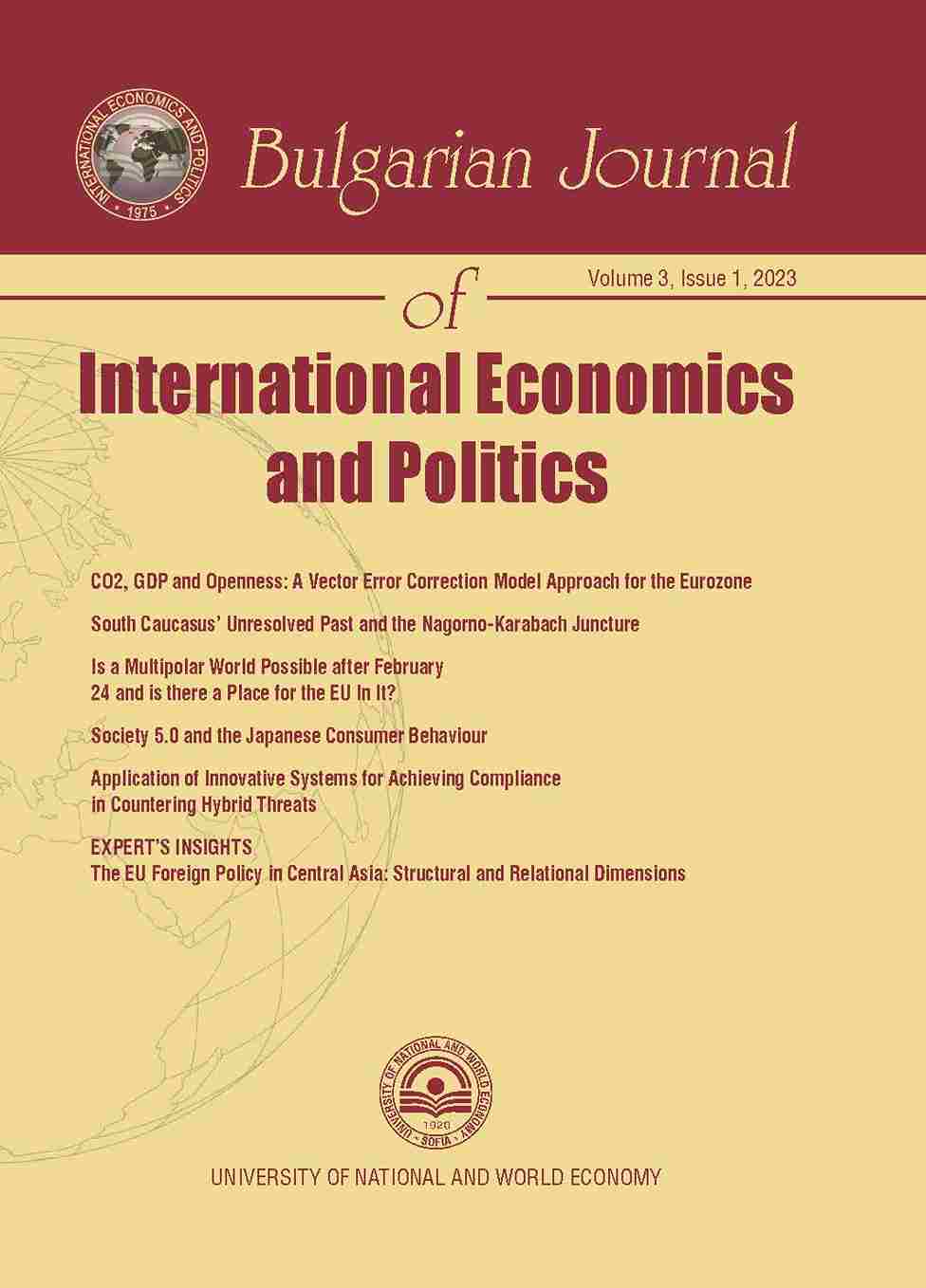South Caucasus’ Unresolved Past and the Nagorno-Karabach Juncture
South Caucasus’ Unresolved Past and the Nagorno-Karabach Juncture
Author(s): Nina Angelova Dyulgerova, Boris ManovSubject(s): Politics / Political Sciences, Politics, History, Special Historiographies:, Politics and religion, History of Communism, Post-Communist Transformation, Inter-Ethnic Relations, Peace and Conflict Studies
Published by: Университет за национално и световно стопанство (УНСС)
Keywords: Caucasus; territorial conflict; Soviet Union; post-imperialism; ethnicity
Summary/Abstract: The Caucasus region represents a clear example of an area of unresolved ethnic and religious problems that thread throughout the region’s historical development. During the Soviet era, due to Kremlin’s strength and ability to control the processes, these issues were suppressed by the socialist ideal of a conflict-free society and remained swept under the rug. However, the Caucasian republics in particular represent an area of preserved ethnic and religious contradictions during the nearly seventy-year period of the Soviet Union. The paper aims at exploring the genesis and development of the ethnic and religious conflicts in the South Caucasus during the Soviet times, which after the disintegration of the USSR turned into permanent conflicts in this post-soviet space such as the conflict in Nagorno-Karabakh (between Armenia and Azerbaijan) and the ones in South Ossetia and Abkhazia, in Georgia. The study also seeks to explore the interstate aspect of those regional conflicts and the Russian role in them. Stalin’s consistent policy of active territorial redistributions deteriorated the situation, especially in the Caucasus region. Proof of the impossibility of consolidation in the region are the conflict points, South Ossetia and Abkhazia within the borders of Georgia, as well as Nagorno-Karabakh, which instigated an armed conflict between Azerbaijan and Armenia. South Ossetia and Abkhazia have been on Georgian territory for many years. Nagorno-Karabakh, despite being inhabited by over 90% Armenian population, was part of Azerbaijani territory during the Soviet era. The Soviet policy failed to create conditions for an effective integration of the separate ethnicities. Evidence of these problems in the Caucasus still echoes in the Nagorno-Karabakh military conflict in the autumn of 2020.
Journal: Bulgarian Journal of International Economics and Politics
- Issue Year: 3/2023
- Issue No: 1
- Page Range: 20-39
- Page Count: 20
- Language: English

